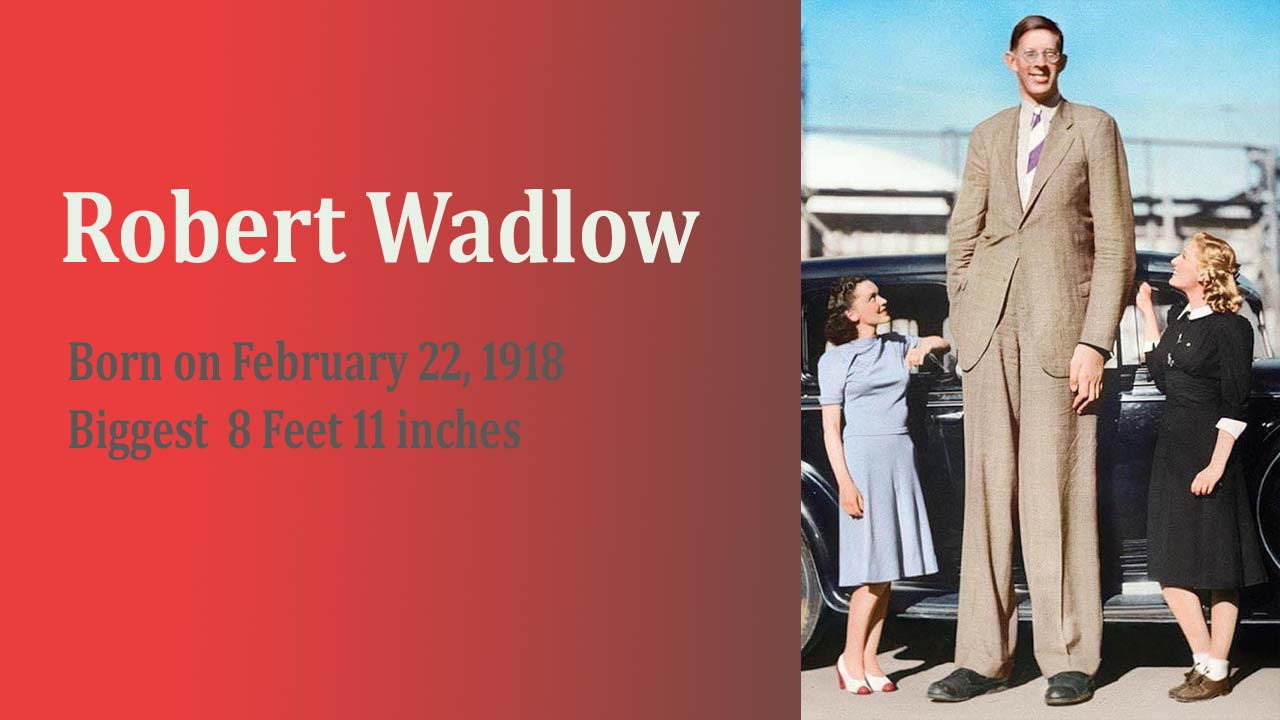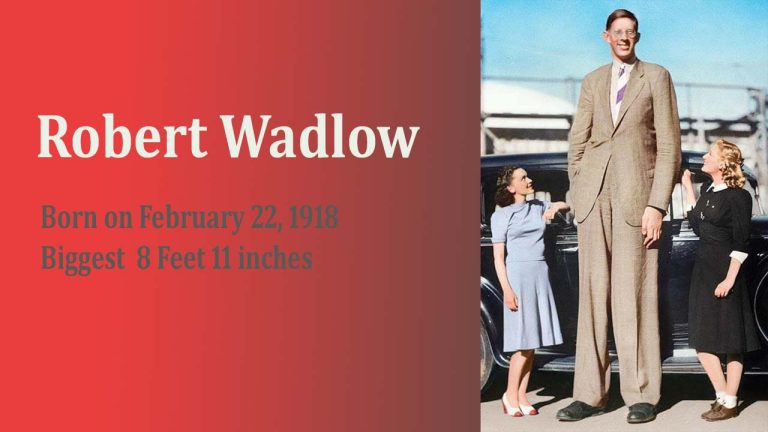Robert Wadlow, who was born on February 22, 1918, was the tallest man in the world when he was 8 feet 11 inches tall, a title he still maintains today. Wadlow had the biggest feet in the world—18.5 inches—and the biggest hands in the world—12.75 inches. He weighed 439 pounds. He wore custom-made shoes with a size of 37 AA for males, and his ring was a size 25.
Robert Wadlow was the oldest of the five children raised by his parents, Harold and Addie Wadlow, and was admired by his younger siblings. Although he was born with dimensions that were typical, it soon became clear that he was anything but typical. His size and weight substantially grew, and in 1929 it was found that his pituitary gland, which controls the release of the hormone human growth hormone (HGH), had hyperfunctioned (overgrown). Robert’s fast growth was caused by an overabundance of HGH generated by the larger gland. There was no indication that he would slow down until his tragic passing.
Robert Wadlow outgrew his father by the time he was eight years old, and by the time he was nine, he was strong enough to carry him up and down a flight of stairs without assistance. Robert went to Roxana Elementary School and then Milton Schoolhouse in Alton for his secondary education. To make it comfortable for him to sit, a unique workstation was built. Robert joined Troop 1 and grew to be the tallest Boy Scout in Alton. He read over 300 books a year and had a great fondness for adventure fiction.
Robert was frequently spotted with his three sisters and one brother, who made up his family of four, and regarded them as his closest pals. They had a lemonade stand together once. Robert would only stand when someone made a purchase, despite the fact that customers came to see him. Let’s talk about the pinnacle of simplicity: they made more than $100 in a single day, which is comparable to more than $1,500 in today’s dollars.
Robert attended Shurtleff College (now SIU School of Dental Medicine) after graduating from Alton High School with the goal of studying law. He started travelling with the Ringling Brothers Circus that same year and performed in the main ring at venues including Madison Square Garden and the Boston Garden. By declining to wear costumes, he preserved his dignity and avoided participating in the sideshow.
He set off on a voyage in 1938 with his father as a representative of the International Shoe Company. The father-son team went more than 300,000 kilometers, purportedly the greatest mileage ever for the organization. Robert was compensated with a wage and a free pair of shoes that normally cost a whopping $100 per pair, which was a great deal for him. Instead of merely being a show, Robert constantly exploited his job to promote the shoe firm.
Robert was a member of the Order of DeMolay, a young men’s Masonic organization, when he was an adolescent. He later joined the fraternity and, under the auspices of the Grand Lodge of Illinois, A.F. & A.M., attained the title of Master Mason in 1939.
He developed a blister on his ankle on July 4, 1940, while taking part in the Manistee National Forest Festival in Michigan as a result of a badly fitted brace. In order to maintain his enormous body, Robert had worn leg braces for years. He was unaware that the blister had become an infection. Due to blood poisoning and an infection, he got a high temperature and had surgery. On July 15, 1940, at the age of 22, Robert Wadlow fell suddenly in his sleep from autoimmune diseases and pituitary gland dysfunction.
In order to obtain Robert’s remains, the Stricken Funeral Home in Alton (now Elias-Smith) flew to Michigan. Redwood was used to construct his individually designed coffin, which was 10 feet 9 inches long and weighed 1,000 pounds. The casket was carried by twelve pallbearers and eight attendants. In Upper Alton’s Oakwood Cemetery, Robert Wadlow was buried.
Edward Anglehart Gibson created the life-sized bronze statue of Robert Wadlow, which is located next to the Alton Museum of History and Art. A bronze chair that is a reproduction of his Masonic lodge seat is placed next to the statue.
Due to the lengthy nature of the original text, certain details may be omitted or paraphrased, but the main ideas have been preserved.














+ There are no comments
Add yours